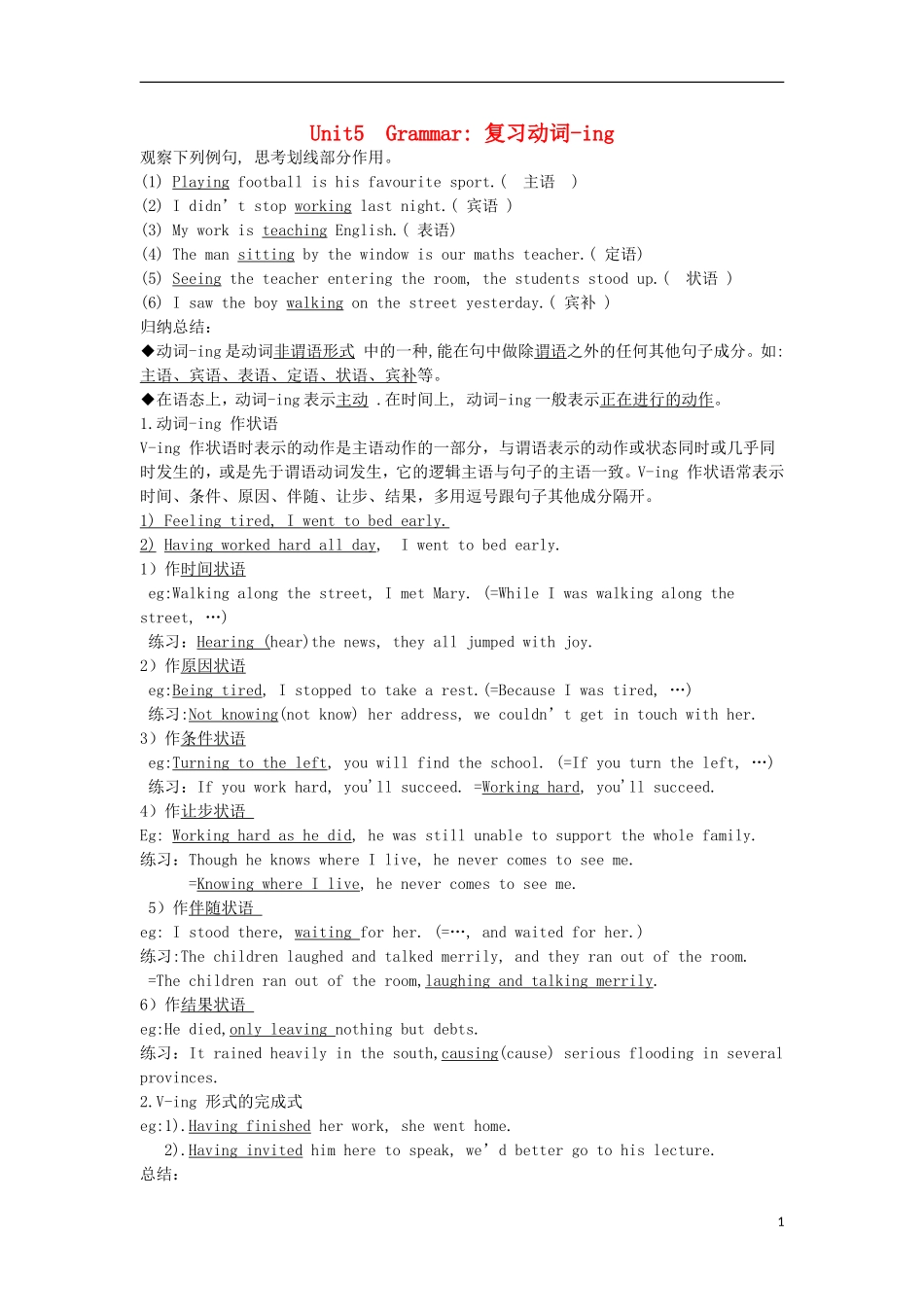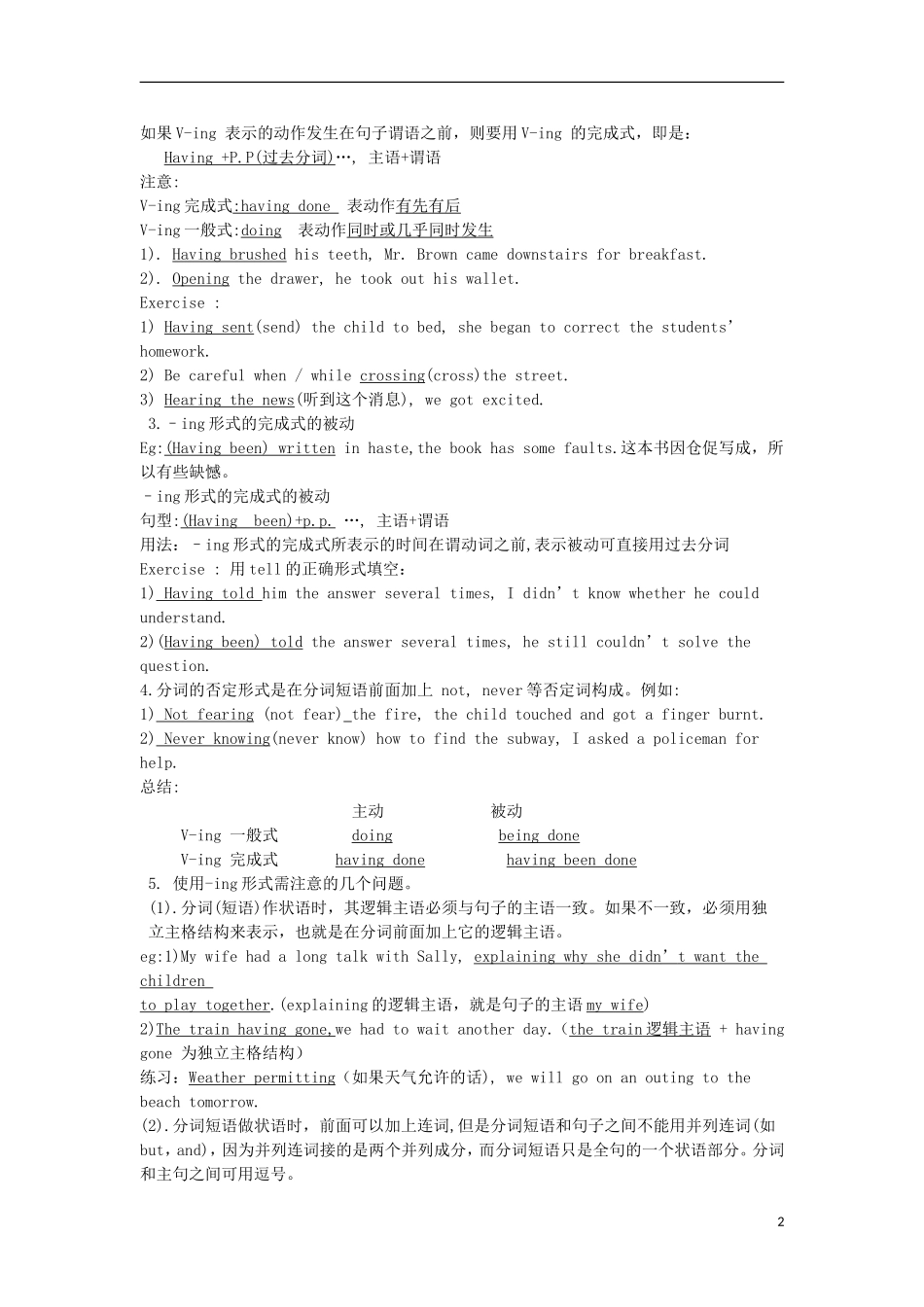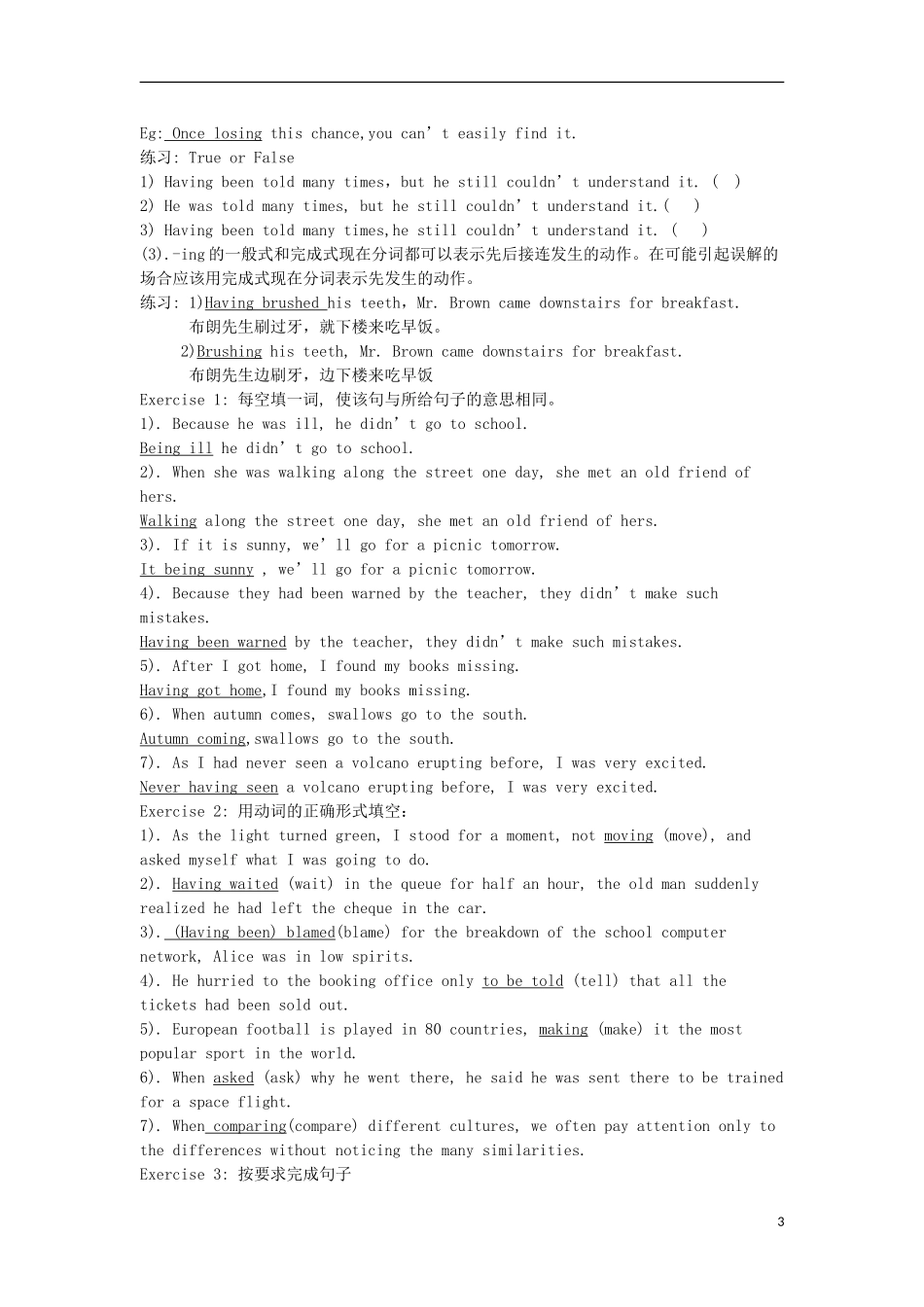Unit5 Grammar: 复习动词-ing 观察下列例句, 思考划线部分作用。 (1) Playing football is his favourite sport.( 主语 ) (2) I didn’t stop working last night.( 宾语 ) (3) My work is teaching English.( 表语)(4) The man sitting by the window is our maths teacher.( 定语) (5) Seeing the teacher entering the room, the students stood up.( 状语 ) (6) I saw the boy walking on the street yesterday.( 宾补 )归纳总结:◆动词-ing 是动词非谓语形式 中的一种,能在句中做除谓语之外的任何其他句子成分。如: 主语、宾语、表语、定语、状语、宾补等。◆在语态上,动词-ing 表示主动 .在时间上, 动词-ing 一般表示正在进行的动作。 1.动词-ing 作状语V-ing 作状语时表示的动作是主语动作的一部分,与谓语表示的动作或状态同时或几乎同时发生的,或是先于谓语动词发生,它的逻辑主语与句子的主语一致。V-ing 作状语常表示时间、条件、原因、伴随、让步、结果,多用逗号跟句子其他成分隔开。1) Feeling tired, I went to bed early.2) Having worked hard all day, I went to bed early.1)作时间状语 eg:Walking along the street, I met Mary. (=While I was walking along the street, …) 练习:Hearing (hear)the news, they all jumped with joy. 2)作原因状语 eg:Being tired, I stopped to take a rest.(=Because I was tired, …) 练习:Not knowing(not know) her address, we couldn’t get in touch with her.3)作条件状语 eg:Turning to the left, you will find the school. (=If you turn the left, …) 练习:If you work hard, you'll succeed. =Working hard, you'll succeed. 4)作让步状语 Eg: Working hard as he did, he was still unable to support the whole family.练习:Though he knows where I live, he never comes to see me. =Knowing where I live, he never comes to see me. 5)作伴随状语 eg: I stood there, waiting for her. (=…, and waited for her.)练习:The children laughed and talked merrily, and they ran out of the room. =The children...


